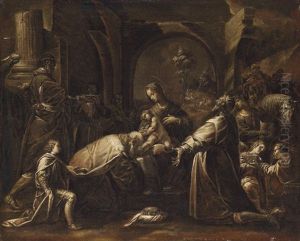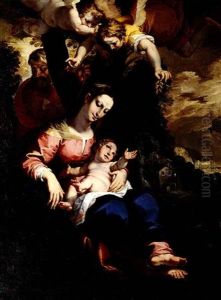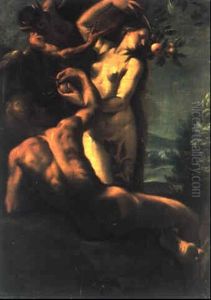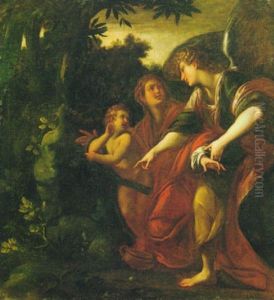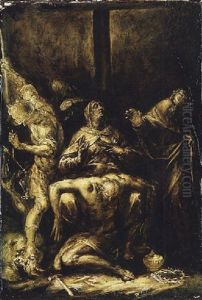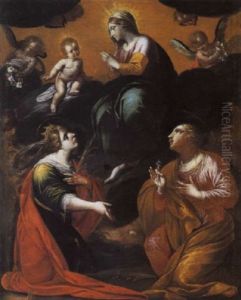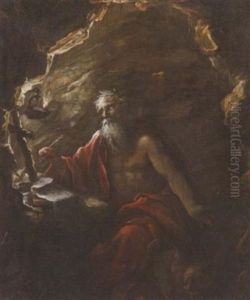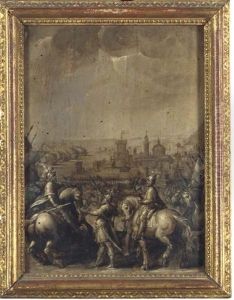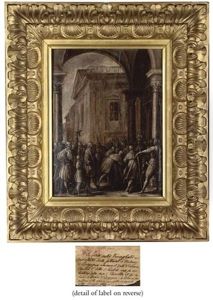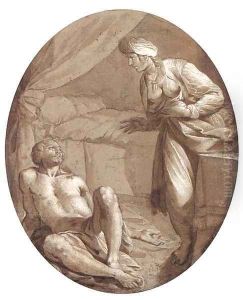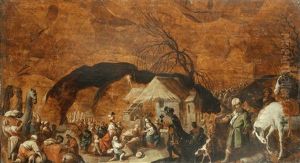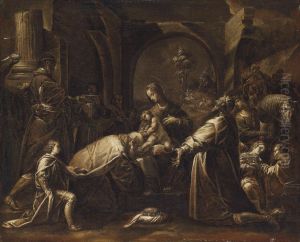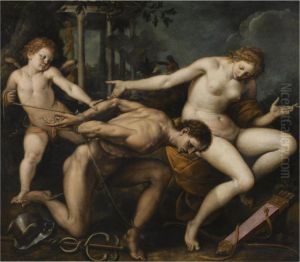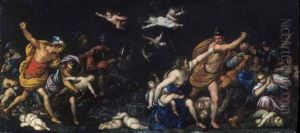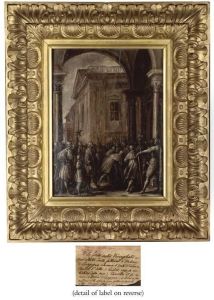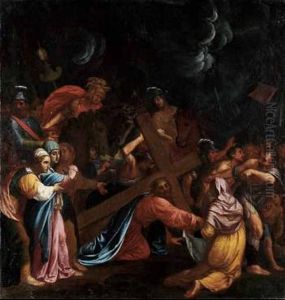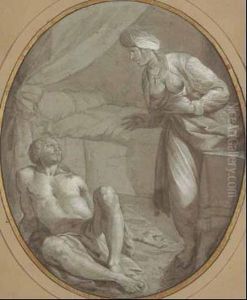Isidoro Bianchi Paintings
Isidoro Bianchi, born in 1581 in Campione d'Italia, which today is an Italian enclave within Swiss territory, was an Italian painter of the early Baroque period. He was part of a family of artists; his father Pompeo was also a painter, and this familial background provided the foundation for Isidoro’s artistic education and early development.
Bianchi is known to have been active mainly in the regions of Lombardy and Piedmont. His work was characterized by a combination of the Mannerist style, which was prevalent during his formative years, and the emerging Baroque sensibility. This blend can be seen in the dynamic compositions, the dramatic use of light and shadow, and the emotional intensity present in his paintings. He was also influenced by the work of the Campi brothers, who were prominent painters in Cremona, and by the Venetian school.
Throughout his career, Bianchi worked on various significant projects, including frescoes and altarpieces for churches. Some of his notable works include frescoes in the church of San Gaudenzio at Ivrea and the dome of the Santuario della Madonna di Loreto in Lanzo Torinese. His style evolved to incorporate more naturalism and a softer palette as he matured as an artist. Bianchi's contributions to fresco painting were particularly admired for their vibrancy and the meticulous attention to detail.
Isidoro Bianchi passed away in 1662 in Campione d'Italia. His legacy lived on through his son, Pompeo Bianchi, who was also a painter and continued the family tradition. Isidoro’s work is still appreciated today for its artistry and its role in bridging the gap between late Renaissance and Baroque styles.
